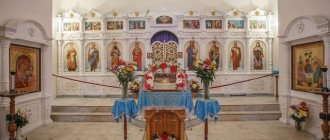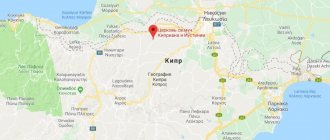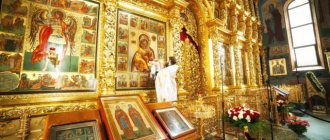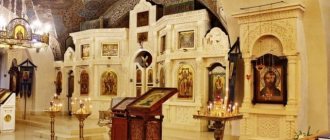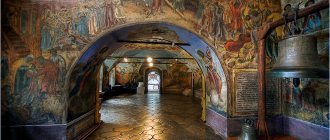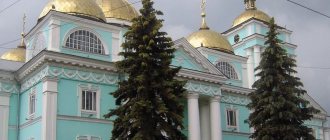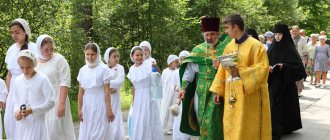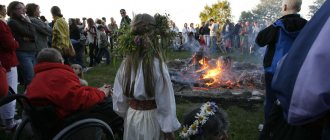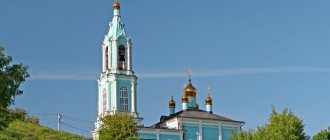Mir
Russia Tula region Kolyupanovo village Kazan convent (Kolyupanovo) Map is loading…
{"format":"leaflet","minzoom":false,"maxzoom":false,"limit":50,"offset":0,"link":"all","sort":[""], "order":[],"headers":"show","mainlabel":"","intro":"","outro":"","searchlabel":"\u2026 \u0441\u043b\u0435\ u0434\u0443\u044e\u0449\u0438\u0435 \u0440\u0435\u0437\u0443\u043b\u044c\u0442\u0430\u0442\u044b","default":"","import-annotation":false,"width ":"auto","height":"350px","centre":{"text":"","title":"""link":"""lat":54.4756000000000000227373675443232059478759765625,"lon": 37.07457699999999789497451274655759334564208984375,"icon":""},"title":"","label":"","icon":"","lines":[],"polygons":[],"circles":[ ],"rectangles":[],"copycoords":false,"static":false,"zoom":8,"defzoom":14,"layers":["OpenStreetMap"],"image layers":[] ,"overlays":[],"resizable":false,"fullscreen":true,"scrollwheelzoom":true,"cluster":false,"clustermaxzoom":9,"clusterzoomonclick":true,"clustermaxradius":80, "clusterspiderfy":true,"geojson":"","clicktarget":"","showtitle":true,"hidenamespace":false,"template":"","userparam":"","activeicon": "","pagelabel":false,"ajaxcoordproperty":"","ajaxquery":"","locations":[{"text":"\u003Cb\u003E\u003Ca href=\"/palomnik/%D0% 9A%D0%B0%D0%B7%D0%B0%D0%BD%D1%81%D0%BA%D0%B8%D0%B9_%D0%B6%D0%B5%D0%BD%D1%81% D0%BA%D0%B8%D0%B9_%D0%BC%D0%BE%D0%BD%D0%B0%D1%81%D1%82%D1%8B%D1%80%D1%8C_(%D0 %9A%D0%BE%D0%BB%D1%8E%D0%BF%D0%B0%D0%BD%D0%BE%D0%B2%D0%BE)\» title=\»\u041a\u0430\ u0437\u0430\u043d\u0441\u043a\u0438\u0439 \u0436\u0435\u043d\u0441\u043a\u0438\u0439 \u043c\u043e\u043d\u0430\u0441\u0442\u0 44b\u0440\u044c (\u041a\u043e \u043b\u044e\u043f\u0430\u043d\u043e\u0432\u043e)\»\u003E\u041a\u0430\u0437\u0430\u043d\u0441\u043a\u0438\u0439 \u0436\u043 5\u043d\u0441\u043a\ u0438\u0439 \u043c\u043e\u043d\u0430\u0441\u0442\u044b\u0440\u044c (\u041a\u043e\u043b\u044e\u043f\u0430\u043d\u043e\u0432\u0 43e)\u003C/a\u003E\ u003C/b\u003E\u003Chr /\u003E\u003Ca href=\"/palomnik/%D0%A1%D0%B2%D0%BE%D0%B9%D1%81%D1%82%D0%B2%D0% BE:%D0%90%D0%BD%D0%BD%D0%BE%D1%82%D0%B0%D1%86%D0%B8%D1%8F\» title=\»\u0421\u0432\u043e \u0439\u0441\u0442\u0432\u043e:\u0410\u043d\u043d\u043e\u0442\u0430\u0446\u0438\u044f\»\u003E\u0410\u043d\u043d\u043e\u0442 \u0430\u0446\u0438\ 1995 1995 0\u043d\u0430\u0432\u043b\ u0438\u0432\u0430\u0435\u043c\u043e\u0439 \u0446\u0435\u0440\u043a\u0432\u0438 \u043d\u0430\u0434 \u043c\u043e\u0433\u0438\u 043b\u043e\u0439 \u0431\u043b\ u0430\u0436\u0435\u043d\u043d\u043e\u0439 \u0415\u0432\u0444\u0440\u043e\u0441\u0438\u043d\u0438\u0438 \u041a\u043e\u043b\u0 44e\u043f\u0430\u043d\u043e\ u0432\u0441\u043a\u043e\u0439. > 0439\u043c\u043e\u043d\u0430 \u0441\u0442\u044b\u0440\u044c","title":"\u041a\u0430\u0437\u0430\u043d\u0441\u043a\u0438\u0439 \u0436\u0435\u043d\u0441\u043a\u 0438\u0439\ U043C \ U043E \ U043D \ U0430 \ U04441 \ U0442 \ U0444B \ U0440 \ U044C (\ U041A \ U043E \ U043B \ U044E \ U043F \ U0430 L U043E) "," Link ":" "," Lat ":54.4756000000000000227373675443232059478759765625,"lon":37.07457699999999789497451274655759334564208984375,"icon":""}],"imageLayers" :[]}
54.4756; 37.074577
Russia, Tula region, Aleksin municipality, Kolyupanovo village
Kolyupanovo village, Tula region
Russia
Kazan Convent
created in 1995 at the church being restored over the grave of Blessed Euphrosyne Kolyupanovskaya. Relatively small monastery.
History[edit]
The Holy Kazan Convent, located in the village of Kolyupanovo, Aleksinsky district, Tula region, was established on July 16, 1995 by the Decree of His Holiness Patriarch Alexy II of Moscow and All Rus' and is one of the young Orthodox monasteries under construction. But still, the history of the origin of the monastery begins in the distant past. At the beginning of the sixteenth century, the village of Kolyupanovo was formed and, according to local legend, even then there was a temple on the banks of the Oka in the name of the Icon of the Mother of God of Kazan.
It existed until 1779 and burned down from a lightning strike. Local landowners Bobrishchev-Pushkin placed the icon saved from the fire in their house and began to vigorously petition for permission to build a new temple in the name of the same icon in Kolyupanov on the site of the one that burned down. The temple was built at the expense of M.A. Bobrishchev-Pushkin, and at the beginning of 1783 the construction was completed. With great triumph, the icon of the Kazan Mother of God was transferred to the new church and placed in the iconostasis. It was in this temple that in July 1855 the blessed elder Euphrosyne of Christ for the sake of the holy fool Princess Vyazemskaya was buried.
The formation of the women's monastery
After the revolution, the Kazan Church was closed. A shoemaker's workshop was first located here, and then the former church burned to the ground. By the early 1990s, none of the local residents even remembered where she was.
Since 1988, Blessed Euphrosyne has been glorified as a locally revered saint of Tula. And in 1993, the restoration of the temple began. The brickwork of the foundation was discovered, and soon the saint’s grave was found. A year later the church was restored.
In 1995, the old woman’s prediction was fulfilled: Kolyupanovo became the site of the founding of the convent of the icon of the Blessed Virgin Mary. At first, the sisters lived at the Kazan Church, the cells were replaced by construction trailers.
Now there are 2 churches: the Kazan Icon of the Blessed Virgin Mary and the Trinity. A guest house, refectory, and prosphora were built. The small community has only 6 nuns. Most of them are elderly nuns. As they themselves say, not everyone agrees to live in village conditions without amenities, which is why there are few sisters.
But residents began to settle near the monastery, whereas before the village was almost dying.
Wandering
For more than ten years, the future Euphrosyne Kolyupanovskaya wandered around different monasteries. The former society lady had to work on prosphora and milk cows. In 1806, at the age of about 48, Evdokia went to Moscow, where she received the written blessing of Metropolitan Plato to perform the feat of foolishness under the name of the fool Euphrosyne. Her refuge became the Serpukhov Vvedensky Vladychny Monastery.
How to get to Mother's source
Twice a year, on the days of memory of Blessed Euphrosyne, cathedral services and prayer services with an akathist are held at the Holy Kazan Monastery. Processions of the cross are held to the healing water source, which attract many Orthodox Christians.
To get to the sacred spring on your own, you will need to travel from Moscow to Tula. To do this, pilgrims board the train at the Kursk station. Having arrived in Tula, they depart from Rizhsky railway station to Kolyupanovo station. Next you need to walk about 2 km through the forest belt, following a special sign.
Having a personal car, you need to drive from Moscow along the Simferopol highway, at the 114th km turn in the direction of Aleksin (after the second sign). Having reached this settlement, turn right to the village of Kolyupanovo. Here you can ask any local resident about the location of the healing spring.
Holy spring
The well dug by Elder Euphrosyne herself is a landmark of Kolyupanov. During the pilgrimage, it is possible to collect water and take a dip. There are men's and women's baths here. Above the source there is a cross and an inscription with the words of the blessed one: “Take water from my source, and you will be healthy.” According to modern evidence, a particularly large number of healings occur here from cancer and blindness. In 2006, the miracle of healing of the boy Alexander, who was born blind, was known.
Since the well is located at a distance from the monastery, many do not enter the monastery at all, but limit themselves to bathing in the blessed water “for health.” The excursion of the Peresvet pilgrimage service is, first of all, of a pilgrimage nature.
Life in the Vvedensky Monastery
After renouncing worldly life, Evdokia Vyazemskaya’s wanderings lasted about 10 years. Being a princess by birth, she did not disdain unusual work.
For some time, the former maid of honor worked in the barnyard of the Spaso-Sumorino Monastery. In 1806, she met with Metropolitan Plato, who gave the woman a blessing to accomplish the feat of foolishness. Under the name of “the fool Euphrosyne” she ended up in the Serpukhov Vvedensky Monastery.
After living for some time in the quarters for the sisters, the new novice moved to a small house not far from the monastery. After this, Euphrosyne began to surprise everyone around her with her unusual actions:
- lived with several cats and dogs, with whom she slept next to her on the floor;
- in cold weather she wore a man’s sheepskin coat, and on holidays she wore a gray cloth caftan;
- she always cut her hair short and tied a rag around her head;
- she flatly refused to wear shoes and remained barefoot even in severe frosts;
- I didn’t light the stove in winter, but did it during the scorching heat.
Secretly from everyone, the holy fool wore around her neck a heavy iron chain with a large cross, chains that pacified the flesh. When one landowner became aware of this, the old woman categorically forbade the disclosure of her secret.
During the day, the holy fool collected medicinal herbs in the forest next to the convent, and at night she walked around it and sang sacred psalms. Euphrosyne prayed in the chapel and went to the cathedral for the liturgy. She confessed to the confessor of the monastery, and received communion only with the onset of Maundy Thursday. During her life at the Vvedensky Monastery, Euphrosyne saw Metropolitan Philaret of Moscow several times, who was able to discern in her a great ascetic.
Early life and renunciation of the world
Little information has been preserved about the life that Euphrosyne led before devoting herself entirely to God. The real name and surname of the Saint is Evdokia Grigorievna Vyazemskaya. The future holy fool was born into a princely family around 1758.
The young princess was educated at the Educational Society for Noble Maidens of the city of St. Petersburg. A young lady with good manners was able to achieve the high favor of Empress Catherine II and become one of her ladies-in-waiting.
It is not known exactly how long Evdokia Vyazemskaya was at court. Here she managed to meet many historical figures - commander Alexander Suvorov, Prince Yuri Dolgorukov and others.
Over time, the luxurious surroundings, palace gossip and intrigue began to oppress the young woman, and she began to think more and more often about serving the Lord. One day Evdokia decided to escape. Together with her, two more court girls, whose souls gravitated towards God, left the palace - Martha and Solomiya.
There are two known versions of how exactly the ladies-in-waiting left the imperial environment. According to the first, they waited until summer and during the court's stay in Tsarskoye Selo they staged a drowning in a pond. In order to be considered dead, the girls left their clothes on the shore of the reservoir, then changed into peasant dresses and fled.
The second story tells that three ladies-in-waiting simply left the palace. The young ladies were wanted for a long time in all corners of the country. One day, Evdokia, despite her attire, was recognized and returned to court. The Empress was not angry with the former maid of honor and greeted her kindly. Having learned about the girl’s firm determination to carry the prayer cross, she released her, finally giving her a new monastic dress.
Life at court
The saint herself did not tell anyone anything about herself, therefore everything that is known about her worldly life was recorded from the words of the blessed one’s contemporaries. She was born in 1758 or 1759 in the family of Prince Grigory Ivanovich Vyazemsky, a representative of the younger branch of this princely family. At birth, the girl received the name Evdokia and already at the age of six she was assigned to the newly opened Society of Noble Maidens at the Smolny Monastery.
In 1776, the first graduating class of the Smolny Institute was graced by Princess Evdokia Grigorievna Vyazemskaya. The girl was immediately assigned to the court as a maid of honor to Empress Catherine II. Here Evdokia had to entertain the bored queen. But worldly life, filled with balls, fireworks, and love affairs, did not suit the future saint.
Perhaps it was at one of the balls that she woke up one day. Suddenly I clearly saw faces distorted with hypocritical grins, unnatural poses of dancing figures, clusters of shiny stones on half-naked bodies. At that moment it was revealed to her what the true price of all this was and what was really valuable. There are many cases in history when socialite people with connections and an upcoming brilliant career “woke up” in an instant and never returned to their previous lives.
Moving to Kolyupanovo
In 1845, the blessed one moved to the village of Kolyupanovo, located in the Tula province. The saint arrived here at the invitation of the landowner Natalya Protopopova, who was her admirer. The old woman took nothing with her except the prayed icon.
Some sources report that the main reason for the holy fool’s move was harassment from the new abbess of the Vvedensky Monastery. There is information that this woman harmed Euphrosyne in every possible way and even ordered all her dogs to be killed.
Mother stayed in Kolyupanovo for the last 10 years of her life. Here she was provided with a small separate house, but the prayer book preferred to live in a cramped room for the maid. As before, there were several animals in the room with her, which the old woman never cleaned up after. They also built a cell for the Blessed One, where she could stay for several months at a time. At Euphrosyne’s request, there was no furniture in this hut; it was replaced by a coffin, in which the old woman loved to rest.
Sometimes the Saint went to her admirers and stayed with them for a long time. Despite her advanced age, Euphrosyne most often traveled on foot. Less often, she rode in a wagon with some of her pets.
Life in the monastery
Perhaps Catherine’s ladies-in-waiting many times, driving past simple village women and men, held their noses contemptuously. And now one of them sleeps on the bare floor, next to the dogs, in a hut filled with a stench next to the monastery. She deliberately chose this. “This is for me instead of the perfume that I used so much at court. “I’m worse than dogs,” the saint answered the question of why she shares shelter with animals and does not want to clean her home. Perhaps this was her way of punishing herself for her previous empty consolations, or perhaps she was warding off annoying guests. Even the monastery is full of women who like to hang around other people’s cells.
Instead of the royal retinue, three dogs, two cats, chickens and turkeys became Euphrosyne’s daily interlocutors and friends. They were kicked out of the house only once a year, on Maundy Thursday, when Mother Euphrosyne communed the Terrible Mysteries of Christ.
The saint, who had studied the secrets of French eloquence for many years, now explained her thoughts with Russian jokes. Euphrosyne always swam at Epiphany in Jordan in her clothes and called on the people: “Come on, guys, hot bath! Go and wash!
At the time when Euphrosyne Kolyupanovskaya lived in the Vvedensky Vladychny Monastery, the monastery was repeatedly visited by Metropolitan of Moscow and Kolomna Philaret (Drozdov). The saint always met him outside the monastery fence and kissed the bishop’s hand. The Metropolitan, who considered Euphrosyne an ascetic, in turn kissed her hand.
The feat of foolishness, which the saint voluntarily carried out, never remains without a reward from God. Like all the holy fools known to Christ, the blessed mother could relieve illnesses and foresee future events. This attracted people to her who needed healing, consolation or good advice. At night, Euphrosyne walked around the monastery and sang psalms. During the day, she collected herbs in the forest, which she gave to the sick who turned to her for help. Mother prayed in the chapel next to the monastery, and came to the monastery cathedral for church services.
